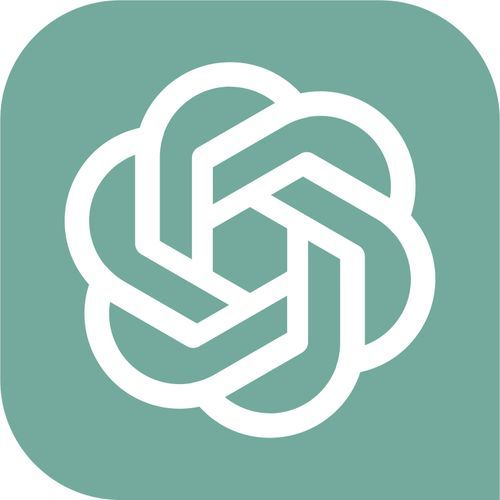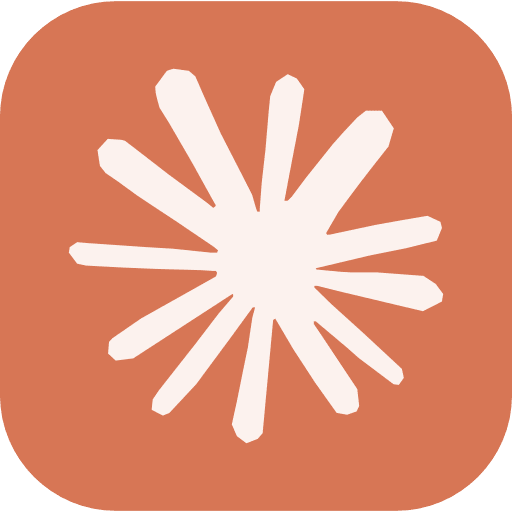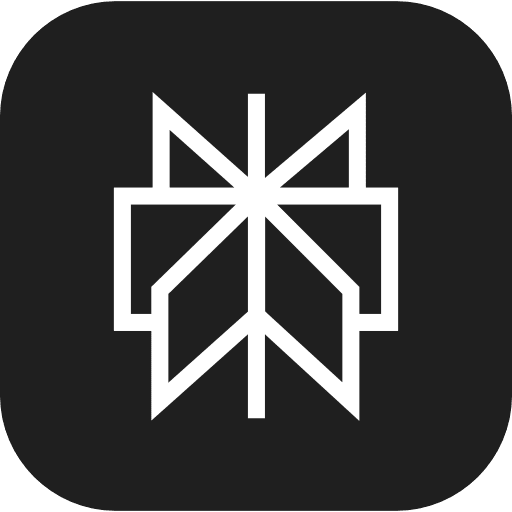Library of teambuilding games & icebreakers


Marshmallow stuff
You’ll need big bags of fluffy marshmallows for this one. Simply have contestants stuff as many marshmallows as they can into their mouth in one minute. Bonus points for asking them to repeat a silly phrase once their mouths are full.
Marshmallow stuff
How to play Marshmallow stuff
You’ll need big bags of fluffy marshmallows for this one. Simply have contestants stuff as many marshmallows as they can into their mouth in one minute. Bonus points for asking them to repeat a silly phrase once their mouths are full.
Gallery



Video


Indoor fort building
Building forts inside the office might sound juvenile. And it is! But that’s the point. Fort building is fun, silly, and creative – a perfect antidote to the usual stress and responsibility associated with work.
Indoor fort building
Building forts inside the office might sound juvenile. And it is! But that’s the point. Fort building is fun, silly, and creative – a perfect antidote to the usual stress and responsibility associated with work.
For this game, get everyone to bring things like bed sheets, cardboard boxes, and string to the office. Then divide the group into teams and give them a 30-minute time limit to construct the best possible fort! Each group then presents what they’ve built for you – the judge – to decide who won.
Gallery



Video


Language Barrier Quest
Ever thought of completing tasks in a foreign language with your team? The Language Barrier Quest throws you into an international adventure where you'll face language challenges head-on. Teammates support each other as you navigate through linguistic puzzles. It's not just about learning new words; it's a chance to build trust and embrace different cultures. This quest transforms language barriers into bridges, all while strengthening your team's cohesion.
Language Barrier Quest
Ever thought of completing tasks in a foreign language with your team? The Language Barrier Quest throws you into an international adventure where you'll face language challenges head-on. Teammates support each other as you navigate through linguistic puzzles. It's not just about learning new words; it's a chance to build trust and embrace different cultures. This quest transforms language barriers into bridges, all while strengthening your team's cohesion.
Instructions
- Divide participants into teams.
- Assign tasks or challenges that require communication in a foreign language.
- Provide resources like translation tools or basic language guides.
- Teams work together to complete tasks, overcoming language barriers.
- Encourage assistance within teams.
- Reflect on the experience to promote cultural understanding and teamwork.
Gallery



Video


Cooperative yoga or stretching
A collaborative set of movements is always a nice idea for a group. We suggest focusing on yoga moves and having each person picking the next move in your flow. A participant will pick a yoga move that everyone completes, and then the next person selects a different one, and so on. It’s best to complete these exercises quietly and without speaking, focusing instead on breathing and movement.
Cooperative yoga or stretching
How to play Cooperative yoga or stretching
A collaborative set of movements is always a nice idea for a group. We suggest focusing on yoga moves and having each person picking the next move in your flow. A participant will pick a yoga move that everyone completes, and then the next person selects a different one, and so on.
It’s best to complete these exercises quietly and without speaking, focusing instead on breathing and movement.
Gallery



Video


Typing race
Who would have made the best 1950s receptionist? You can find out with this fun activity. Anyone who is interested should gather in one space with their keyboards or laptops. Announce the words that people should type (or write them on a white board) Set a timer and see who can get the typing done the fastest. This is helpful for developing typing skills and is also a great refresher for hand-eye coordination during a monotonous day.
Typing race
How to play Typing race
Who would have made the best 1950s receptionist? You can find out with this fun activity. Anyone who is interested should gather in one space with their keyboards or laptops. Announce the words that people should type (or write them on a white board) Set a timer and see who can get the typing done the fastest. This is helpful for developing typing skills and is also a great refresher for hand-eye coordination during a monotonous day.
Gallery



Video


Group Postcard
For a more creative game, have your team collaboratively use postcards to make a bigger picture. Hand out several blank postcards and have the team work together to determine how they’ll create their picture. Some people like to have a cohesive image in mind and then discuss how they’ll each do a small part. Other people like to bring up and color the postcards one at a time, adding a small piece to the growing image, and seeing what it becomes. Either way, this is a great way to facilitate teamwork, cooperation, and creativity all at once.
Group Postcard
How to play Group Postcard
For a more creative game, have your team collaboratively use postcards to make a bigger picture. Hand out several blank postcards and have the team work together to determine how they’ll create their picture.
Some people like to have a cohesive image in mind and then discuss how they’ll each do a small part. Other people like to bring up and color the postcards one at a time, adding a small piece to the growing image, and seeing what it becomes. Either way, this is a great way to facilitate teamwork, cooperation, and creativity all at once.
Gallery



Video


Heads-Up!
Heads-up! No, we’re not talking about a safety warning, we’re talking about the app game that's taken the world by storm. And guess what? It's not just for playing with friends on a night out. This game can also be a hoot in the office.
Heads-Up!
Heads-up! No, we’re not talking about a safety warning, we’re talking about the app game that's taken the world by storm. And guess what? It's not just for playing with friends on a night out. This game can also be a hoot in the office.
How to play:
- Split into teams.
- One player holds the phone on their forehead, facing outwards.
- Their team gives clues to describe the word or phrase on the screen.
- If they guess correctly, swipe up; if not, swipe down.
- Repeat until time runs out or all words have been guessed.
Heads-up! is a fantastic opportunity to promote better communication and teamwork, as well as help to break the ice among new colleagues. Current members will also benefit as it's a welcome change to ordinary office chit-chat.
Gallery



Video


Paranoia
Sitting in a circle, players take turns whispering a question into the ear of the person on their right – the answer to which is someone else playing the game. Whoever’s asked the question then points at whoever they believe is the answer. For example, you might ask, “who is the best-looking person in the group?” to Alice, who might point at James across the room. But poor James doesn’t know what the question was! Hence the name, Paranoia. The only way for James to find out is to accept a dare/forfeit. If he’s unwilling to do so, then it becomes Alice’s turn to whisper a question to whoever’s next to her. A word of caution: Paranoia’s a fun and unique question game, but it isn’t without tension! We recommend you only play if everyone on the team is close friends.
Paranoia
How to play Paranoia
Sitting in a circle, players take turns whispering a question into the ear of the person on their right – the answer to which is someone else playing the game. Whoever’s asked the question then points at whoever they believe is the answer.
For example, you might ask, “who is the best-looking person in the group?” to Alice, who might point at James across the room. But poor James doesn’t know what the question was! Hence the name, Paranoia. The only way for James to find out is to accept a dare/forfeit. If he’s unwilling to do so, then it becomes Alice’s turn to whisper a question to whoever’s next to her.
A word of caution: Paranoia’s a fun and unique question game, but it isn’t without tension! We recommend you only play if everyone on the team is close friends.
Gallery



Video


Conflict resolution storytelling
This one's all about sharing stories! In this activity, we'll open up about our real-life workplace conflicts and learn a bunch of cool stuff from each other.
Conflict resolution storytelling
This one's all about sharing stories! In this activity, we'll open up about our real-life workplace conflicts and learn a bunch of cool stuff from each other.
Why it's awesome for learning conflict resolution
Real-Life Drama: So, imagine this: We're sharing the nitty-gritty details of actual conflicts we've faced at work. No made-up stuff here! That means the lessons we learn are totally relatable to our daily grind.
All Walks of Life: We've got a mixed bag of folks here, from different departments and roles. That means loads of different perspectives. Hearing stories from all angles makes the learning super rich.
Feel the Empathy: When we listen to each other's tales of workplace woe, it's like putting on someone else's shoes (not literally, though). We start to get how our colleagues feel in those tough spots.
Gallery



Video


Backward ABC
This is a great one because no supplies are required! If you’re tight on space or budget give this game a try. For this activity, each player must attempt to say the alphabet in reverse. They only have one minute to complete the task and whoever can say the full alphabet backwards in the shortest amount of time wins.
Backward ABC
How to play Backward ABC
This is a great one because no supplies are required! If you’re tight on space or budget give this game a try. For this activity, each player must attempt to say the alphabet in reverse. They only have one minute to complete the task and whoever can say the full alphabet backwards in the shortest amount of time wins.
Gallery



Video


Keychain Sharing
Sometimes bringing a physical object into play can add a new and more personal element. For this activity, have everyone sit in a circle and then place their keyring in front of them. Everyone should talk about which keys are on their ring and why. They can also talk about any keychains they have and why they are meaningful. Go around in a circle clockwise or counter-clockwise and make sure everyone has a chance to share uninterrupted. If you want to take things a step further, take another spin around the group and have everyone share one insight they gained by hearing about others’ keys.
Keychain Sharing
How to play Keychain Sharing
Sometimes bringing a physical object into play can add a new and more personal element. For this activity, have everyone sit in a circle and then place their keyring in front of them. Everyone should talk about which keys are on their ring and why.
They can also talk about any keychains they have and why they are meaningful. Go around in a circle clockwise or counter-clockwise and make sure everyone has a chance to share uninterrupted. If you want to take things a step further, take another spin around the group and have everyone share one insight they gained by hearing about others’ keys.
Gallery



Video


One Must Go
One Must Go is a fun question game that’d be a fantastic warm-up activity before team meetings or on your next work retreat. We love it for its ability to stimulate light-hearted conversations and help co-workers get to know each other. How it works is simple: someone comes up with three to four options in a particular category and then asks the group to decide one option to get rid of. For example, “One must go: your favorite drink, your favorite item of clothing, your favorite song, your favorite food?” Or, “One must go: mustard, mayo, ketchup, bbq sauce?”
One Must Go
How to play One Must Go
One Must Go is a fun question game that’d be a fantastic warm-up activity before team meetings or on your next work retreat. We love it for its ability to stimulate light-hearted conversations and help co-workers get to know each other.
How it works is simple: someone comes up with three to four options in a particular category and then asks the group to decide one option to get rid of. For example, “One must go: your favorite drink, your favorite item of clothing, your favorite song, your favorite food?” Or, “One must go: mustard, mayo, ketchup, bbq sauce?”
Gallery



Video


Virtual argument arena
In virtual argument arena, two team members go head-to-head, debating a fun or totally ridiculous topic. One argues for, and the other argues against—whether it’s the superiority of pineapple on pizza or why dogs are better than cats. The rest of the team can sit back, watch, and vote for the winner.This is a lighthearted way to get people talking, thinking on their feet, and maybe even learning how to argue without it getting personal!
Virtual argument arena
In virtual argument arena, two team members go head-to-head, debating a fun or totally ridiculous topic. One argues for, and the other argues against—whether it’s the superiority of pineapple on pizza or why dogs are better than cats. The rest of the team can sit back, watch, and vote for the winner.
This is a lighthearted way to get people talking, thinking on their feet, and maybe even learning how to argue without it getting personal!
How to play:
- Choose two participants and assign them opposing sides of a fun topic.
- They take turns debating while the rest of the team watches.
- The team votes on the most convincing argument to decide the winner.
Gallery



Video


Role-rotations
Rotating roles in your teams can immerse them in healthy agile practices while developing their adaptability, and giving a fresh perspective on the tasks their colleagues perform. By rotating through positions like designer, developer, and tester, they’ll be gaining insights on team contributions and will be more empathetic of task ownership.
Role-rotations
Rotating roles in your teams can immerse them in healthy agile practices while developing their adaptability, and giving a fresh perspective on the tasks their colleagues perform. By rotating through positions like designer, developer, and tester, they’ll be gaining insights on team contributions and will be more empathetic of task ownership.
Set up:
Assign every member an initial role, and give them a small hypothetical project, like designing an app feature. Let them play out their roles for a few minutes before rotating. Encourage each member to build on the contributions of those before them. Shifting from role to role comes with a perspective shift, so reflect on how each rotation improved on the last to reinforce agile principles of incremental improvement.
Gallery



Video


The Penny game
The Penny Game helps teams find the sweet spot between rhythm and balance. This simple game demonstrates how important workflow and efficiency are to agile working. You’ll need a decent-sized coin collection beforehand.
The Penny game
The Penny Game helps teams find the sweet spot between rhythm and balance. This simple game demonstrates how important workflow and efficiency are to agile working. You’ll need a decent-sized coin collection beforehand.
Set up:
Form teams of 5-6, providing each with a batch of 20 pennies. In each round, team members pass a batch, flipping each penny before passing. Reduce batch sizes each round to demonstrate smoother workflow with smaller batches. After each round, pause for feedback on speed and accuracy.
Gallery



Video


Yes, let’s
“Yes, Let’s” is a classic improv game that’s taken straight out of drama class. We like it for a host of reasons! However, one of its main draws in the context of boosting collaboration is that it involves everyone who is present.Unlike other activities of this nature, the focus is never on a single person – which is ideal for anyone who doesn’t like being the center of attention.
Yes, let’s
“Yes, Let’s” is a classic improv game that’s taken straight out of drama class. We like it for a host of reasons! However, one of its main draws in the context of boosting collaboration is that it involves everyone who is present.
Unlike other activities of this nature, the focus is never on a single person – which is ideal for anyone who doesn’t like being the center of attention.
Here’s how to play:
In a large open space, ask everyone present to start walking around the room. Next, shout out a suggestion for something the group should do.
For example, you could yell, “let’s go swimming in an ice-cold lake”, “let’s ski down this mountain”, or “let’s crawl on our bellies through this minefield.” It can be anything you want, but the game works best when it involves movement.
Whatever you suggest, the group has to respond enthusiastically by yelling back, “yes, let’s!” Everyone then does the action in question, moving around the room “swimming”, “skiing”, or “crawling”. After a while, someone else shouts out another action (“let’s cook a feast for our Viking guests”), and the process repeats.
Hilarity ensues as colleagues look around at their teammates doing all manner of crazy movements and mimes! Expect to energize the room, laugh until your belly hurts, and remember the joy of playing.
Furthermore, you’ll reaffirm a key element of collaboration: that there’s no such thing as a bad idea. Creative problem-solving demands a culture of acceptance, where people feel confident about raising their hand to offer a suggestion. “Yes, Let’s” normalizes unexpected ideas, rewards engagement, and stops people from feeling self-conscious. You’re sure to reap the rewards in the office.
Gallery



Video


Writing Marathon
Set a time limit and challenge team members to write a short story, poem, or piece of creative writing within that timeframe. Encourage them to unleash their imagination and explore different genres or styles.
Writing Marathon
How to play:
Set a time limit and challenge team members to write a short story, poem, or piece of creative writing within that timeframe. Encourage them to unleash their imagination and explore different genres or styles.
Materials needed: Paper, pens, or laptops
Benefits:
- Strengthened bonds through storytelling: Gather 'round and share the written masterpieces. Through storytelling, your team members connect on a deeper level, their narratives intertwining and creating a tapestry of shared experiences. Like a literary campfire, this activity kindles a sense of unity and camaraderie that'll keep the creative flames burning bright.
Gallery



Video


Paperclip chain relay
This activity tests the strength of every link in the chain. In paperclip chain relay, teams compete to craft the longest paperclip chain within a time limit.
Paperclip chain relay
This activity tests the strength of every link in the chain. In paperclip chain relay, teams compete to craft the longest paperclip chain within a time limit.
Set up:
- Split everyone into teams of 4 to 6. Enough brains to brainstorm, but not too many cooks to spoil the broth.
- Hand out equal piles of paper clips to each team. Ready, set, clip!
- Decide on a time limit. 5 to 10 minutes should do the trick. Start your timer and keep it viewable.
- Roam the room and cheer teams on as they make the longest chain possible. When time’s up, measure each chain to find the longest.
Gallery



Video


Penny stack
Players should try to stack 25 pennies in under one minute using only one hand. This game works best for small groups and is ideal for groups of three players competing in rounds of play. You’ll need to make sure you have a few rolls of pennies to start the game.
Penny stack
How to play Penny stack
Players should try to stack 25 pennies in under one minute using only one hand. This game works best for small groups and is ideal for groups of three players competing in rounds of play. You’ll need to make sure you have a few rolls of pennies to start the game.
Gallery



Video


What I admire most in others…
Yet another version of the most straightforward style of icebreaker, this one involves answering the question “What do you most admire in others?” In this way, you can find out what matters most to the people you work with, which makes for a much more pleasant and cooperative work environment. For example, if trust is most important to someone, then you’ll remember that doing what you say you will is crucial. If someone says being accountable is very admirable, then you know that you can count on them for help with projects.
What I admire most in others…
How to play What I admire most in others…
Yet another version of the most straightforward style of icebreaker, this one involves answering the question “What do you most admire in others?” In this way, you can find out what matters most to the people you work with, which makes for a much more pleasant and cooperative work environment. For example, if trust is most important to someone, then you’ll remember that doing what you say you will is crucial. If someone says being accountable is very admirable, then you know that you can count on them for help with projects.
Gallery



Video


Emoji communication
After gathering everyone together in a remote arena, a game of Emoji Communication is a great way to get teams working together. This game highlights how easy it is to misinterpret digital messages and the importance of thoughtful communication. It helps members build agile skills where tone and context need extra clarification.
Emoji communication
After gathering everyone together in a remote arena, a game of Emoji Communication is a great way to get teams working together. This game highlights how easy it is to misinterpret digital messages and the importance of thoughtful communication. It helps members build agile skills where tone and context need extra clarification.
Set up:
One person in the remote meeting is chosen as the messenger. They create a message, a clear and cohesive sentence using only emojis. No words allowed! Everyone else works by a timer and writes down their guesses. Dish out points for correct guesses and rotate the messenger. Some example sentences to start you off could be:
"Let’s grab coffee and chat" ☕👫💬
"Team celebration tonight!" 🎉🍻🎶🕺
"Emergency! Need a quick solution" 🚨🧠⚙️⏳
Gallery



Video


The Neverending Story
This is a quick and easy icebreaker that doesn’t require any equipment and is guaranteed to produce a laugh. The game inspires your team to get creative and think on their feet in a fun environment. The aim of the game is to collaborate on an interesting and unpredictable story by allowing each player to contribute one sentence at a time.
The Neverending Story
This is a quick and easy icebreaker that doesn’t require any equipment and is guaranteed to produce a laugh. The game inspires your team to get creative and think on their feet in a fun environment. The aim of the game is to collaborate on an interesting and unpredictable story by allowing each player to contribute one sentence at a time.
How to play the Neverending Story
To play The Neverending Story, gather your group into a circle, sitting or standing—it’s up to you. Then, choose a player to start, you can help them by giving them the first sentence or proposing a setting for the story. Once a sentence has been added to the story, the opportunity moves to the next person in the circle.
You can set a time limit, or bring the game to a close once the story meets its natural conclusion. Your team are sure to have great fun being creative and collaborating on a silly story.
If your team members are new to each other, encourage each player to include the name of one of their colleagues in their sentence. For example, “Then, Steve walked in and couldn’t believe his eyes!”
Gallery



Video


Jenga thoughts
This is a guaranteed good-time game that can be played after work on a retreat or at a weekend getaway with your team. It only requires the game Jenga and adequate seating and surface area for playing.
Jenga thoughts
This is a guaranteed good-time game that can be played after work on a retreat or at a weekend getaway with your team. It only requires the game Jenga and adequate seating and surface area for playing.
How to play:
The same rules apply to Jenga Thoughts to the original Jenga. There is a tower made out of rectangular wooden blocks that players have to remove, so the whole tower doesn’t fall strategically.
With this team-building-friendly version, each block has a question the player has to answer. The objective is to keep the tower intact, but questions facilitate discussion and break down walls, bringing teams together while playing.
Materials you’ll need: A Jenga set, multiple, and seating areas with tables where people can play.
How many people: Small to mid-sized teams and a large one for setting up the game so everyone can play. If you have multiple Jenga sets, ensure you have several tables to seat and several small groups.
Gallery



Video


Transportation Challenge
Get ready for a wild ride as your team navigates public transport to conquer checkpoints. It's not just about reaching your destination; it's about making quick decisions and adapting on the fly. You'll need to work together to figure out the best routes and timings. This challenge sharpens your problem-solving skills and shows you the power of collaboration. Plus, you're in for a fun-filled adventure that will leave you with unforgettable memories.
Transportation Challenge
Get ready for a wild ride as your team navigates public transport to conquer checkpoints. It's not just about reaching your destination; it's about making quick decisions and adapting on the fly. You'll need to work together to figure out the best routes and timings. This challenge sharpens your problem-solving skills and shows you the power of collaboration. Plus, you're in for a fun-filled adventure that will leave you with unforgettable memories.
Instructions
- Create teams and assign a starting point.
- Provide a list of checkpoints around the city.
- Teams use public transport to reach checkpoints in a set order.
- They must decide on routes and timings.
- Time penalties for missed checkpoints.
- First team to finish or most checkpoints in time wins.
Bonus Tip!
You won't believe the transport paradise that London is – metros, taxis, the iconic underground, and buses galore, making it an absolute dream for the Transportation Challenge. It's the ultimate playground for this adventure!
Gallery



Video

















